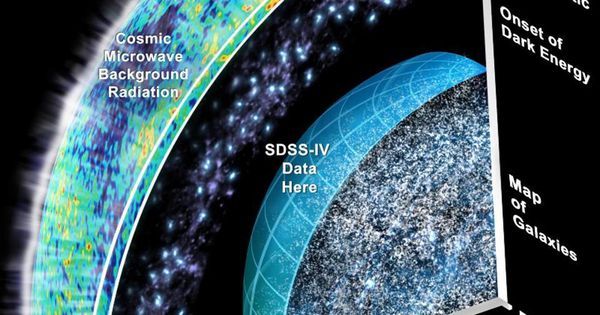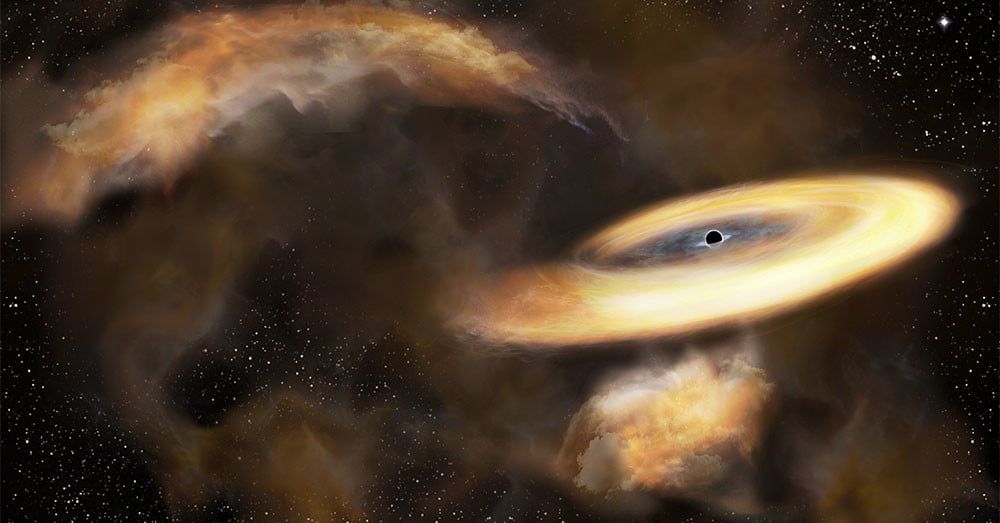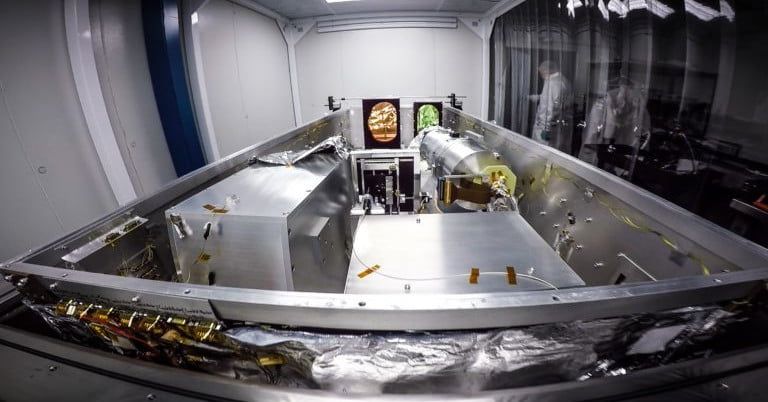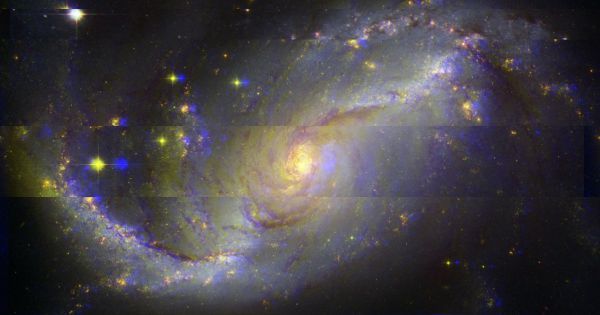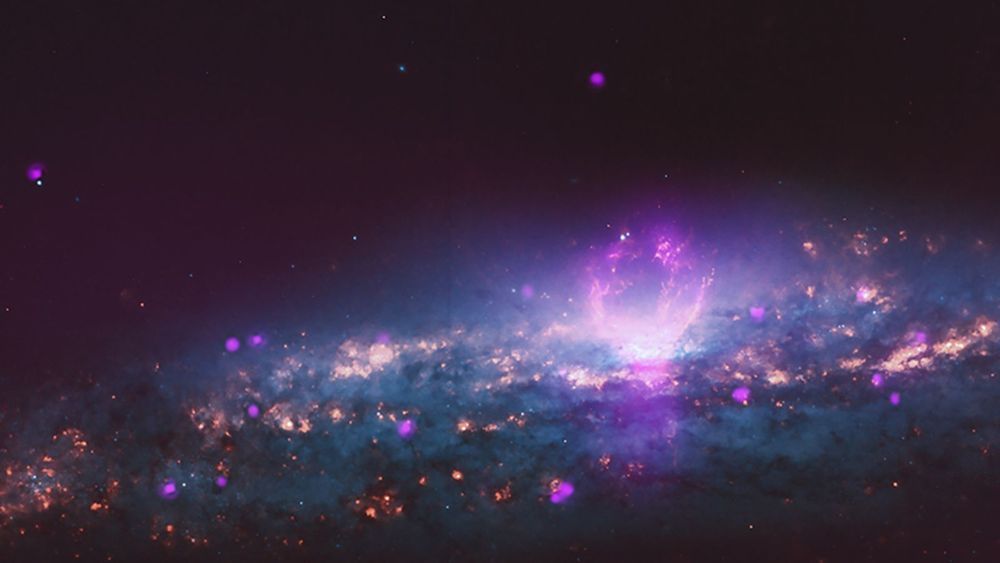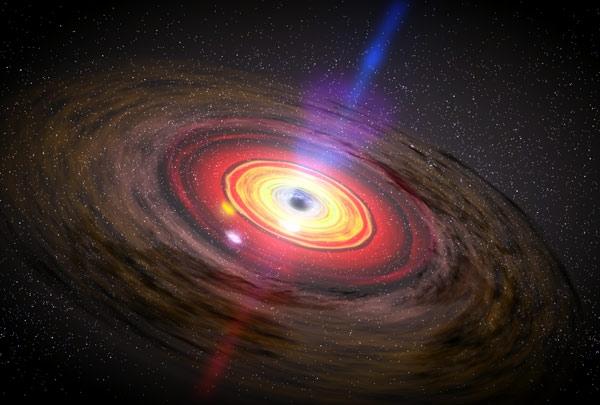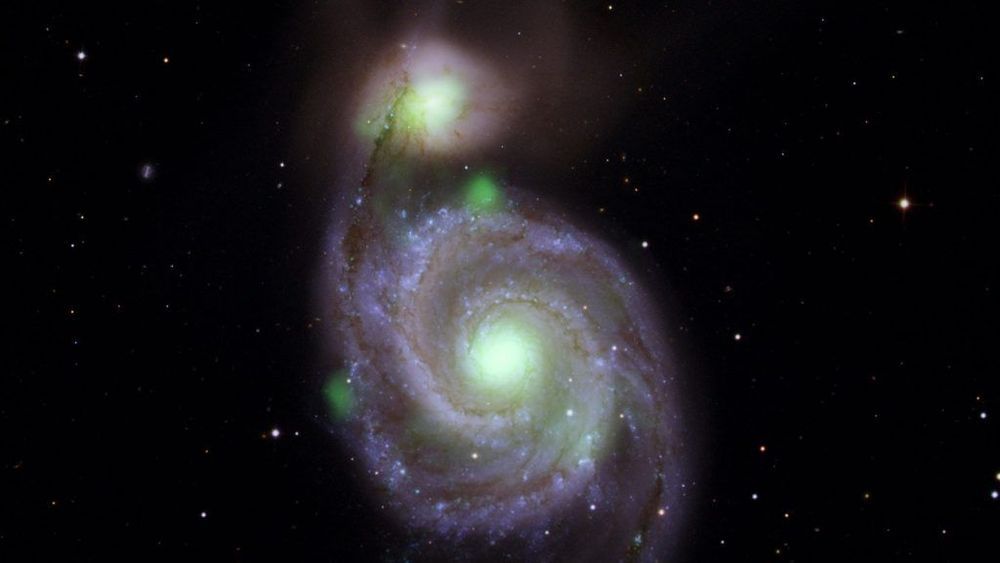Archive for the ‘cosmology’ category: Page 344
Mar 3, 2019
Ninja-like Black Hole Discovered Gobbling up a Gas Cloud
Posted by Genevieve Klien in category: cosmology
How do you find something you can’t see? Japanese astronomers have hunted a hidden black hole by observing the movement of a cloud of gas it is consuming, located 25,000 light-years away from Earth. This is the first intermediate-sized black hole ever found, giving clues to how black holes merge and grow.
Mar 2, 2019
The Habitable Planet Finder Is a New Tool to Locate Earth-like Exoplanets
Posted by Genevieve Klien in categories: cosmology, futurism
Astronomers have a new tool to help them find habitable planets in our galaxy: the Habitable Planet Finder (HPF), a high-precision spectrograph. The HPF can be used to detect worlds which have some key qualities, like being a rocky planet orbiting an red dwarf. A red dwarf, also known as an M-dwarf, is a type of star that is relatively cool, small, and dim, and is somewhat similar to our Sun (which is classified as a white or yellow dwarf.) Red dwarfs are common in the Milky Way, like the nearby Barnard’s star, making them good hunting grounds for exoplanets.
“About 70 percent of the stars in our galaxy are M-dwarfs like Barnard’s star, but the near-infrared light they emit has made it difficult for astronomers to see their planets with ordinary optical telescopes,” Paul Robertson, assistant professor of physics and astronomy at the University of California, Irvine, said in a statement. “With the HPF, it’s now open season for exoplanet hunting on a greatly expanded selection of stellar targets.”
The HPF measures subtle changes in the color of light given off by stars, which can indicate the influence of an orbiting planet. In particular, it searches for planets with a low mass located within the “habitable zone” of their stars where surface water can exist. The spectrograph has already demonstrated its usefulness by confirming the existence of a super-Earth which is orbiting Barnard’s star during its commissioning, and should be able to detect many more planets similar in size to Earth in the future.
Continue reading “The Habitable Planet Finder Is a New Tool to Locate Earth-like Exoplanets” »
Mar 2, 2019
New Theory: “Mirror Image” of Our Universe Existed Before Big Bang
Posted by Michael Lance in categories: cosmology, physics
A bizarre theory could explain dark matter.
Mirror Image
The Big Bang didn’t just result in our familiar universe, according to a mind-bending new theory — it also generated a second “anti-universe” that extended backwards in time, like a mirror image of our own.
Continue reading “New Theory: ‘Mirror Image’ of Our Universe Existed Before Big Bang” »
Mar 1, 2019
Check Out This Incredible X-Ray ‘Superbubble’ That’s Nearly 5,000 Light-Years Wide
Posted by Genevieve Klien in categories: cosmology, nuclear energy
This incredible image shows a pair of “nuclear superbubbles,” one over 4,900 light-years across and the other over 3,500 light-years. They’re emanating from the center of the galaxy NGC 3079, likely the result of a central black hole consuming matter and spewing it back out.
Or, the superbubbles could be from a starburst, a faster-than-usual stellar birth. The bubble-like shape could come from shock waves and compression within the cooler gas. But there’s still an element of mystery here, as the smaller bubble seems to be emanating synchrotron emission, or high-energy x-rays from spiraling electrons, while the larger bubble isn’t.
Feb 28, 2019
Professor JohnJoe McFadden Quantum Biology — IdeaXme — Ira Pastor
Posted by Ira S. Pastor in categories: aging, biological, biotech/medical, chemistry, complex systems, cosmology, disruptive technology, DNA, evolution, health

Feb 27, 2019
Gigantic Japanese detector prepares to catch neutrinos from supernovae
Posted by Genevieve Klien in categories: cosmology, particle physics
Recent upgrades to the Super-Kamiokande neutrino observatory will allow it to trace the history of exploding stars. An upgraded Super-Kamiokande will be able to detect these particles with greatly improved efficiency.
Feb 26, 2019
There’s a black hole that can let humans erase their past, astrophysicists say
Posted by Michael Lance in categories: cosmology, physics
Forget the past.
However, a study from Berkley University suggests that entering a specific black hole in the universe can actually erase everything that had happened in a person’s past. Not only that, it could also give humans infinite futures!
But, how is that even possible?
Continue reading “There’s a black hole that can let humans erase their past, astrophysicists say” »
Feb 25, 2019
Fighting Aging With Stress, Randomness, Complexity and Usefulness — Dr. Marios Kyriazis — Ira Pastor
Posted by Ira S. Pastor in categories: aging, bioengineering, biological, bioprinting, biotech/medical, cosmology, DNA, evolution, genetics, health

Feb 21, 2019
“Extreme Relic”–Merging Black Holes Illuminated
Posted by Genevieve Klien in categories: cosmology, materials
In the nearby Whirlpool galaxy and its companion galaxy, M51b, two supermassive black holes heat up and devour surrounding material. These two monsters should be the most luminous X-ray sources in sight, but a new study using observations from NASA’s NuSTAR (Nuclear Spectroscopic Telescope Array) mission shows that a much smaller object is competing with the two behemoths.
The most stunning features of the Whirlpool galaxy – officially known as M51a – are the two long, star-filled “arms” curling around the galactic center like ribbons. The much smaller M51b clings like a barnacle to the edge of the Whirlpool. Collectively known as M51, the two galaxies are merging.
At the center of each galaxy is a supermassive black hole millions of times more massive than the Sun. The galactic merger should push huge amounts of gas and dust into those black holes and into orbit around them. In turn, the intense gravity of the black holes should cause that orbiting material to heat up and radiate, forming bright disks around each that can outshine all the stars in their galaxies.
Continue reading “‘Extreme Relic’--Merging Black Holes Illuminated” »
